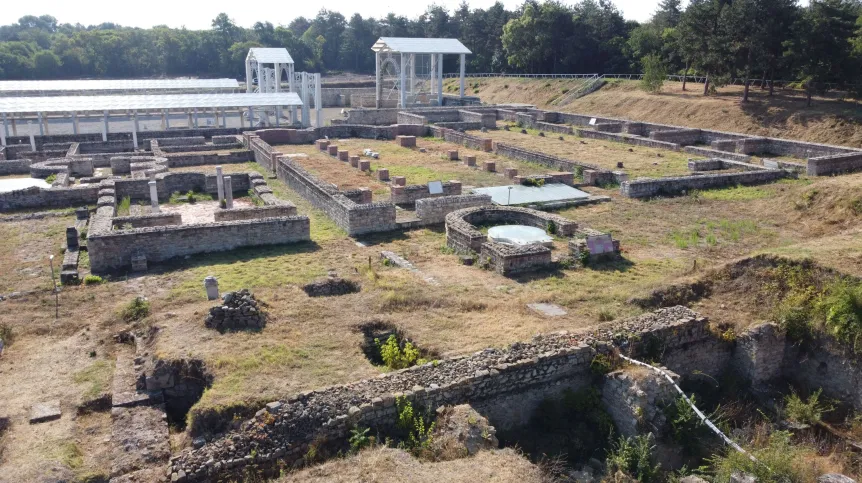
The arsenal in the camp of the Roman Italian Legion in Novae (Bulgaria) occupied as much as 32,000 square meters, archaeologists from the Adam Mickiewicz University in Poznań have determined during this year's completed research. This is the 65th season of Polish-Bulgarian archaeological work in Novae.
Novae was a legion camp built in the 1st century AD by the Roman legion, as a permanent base of the First Italian Legion (Legio I Italica) on the Lower Danube Limes (border of the empire) in the Mesia Inferior province. In 69 CE, it was decided to strengthen the border of the empire because the Romans were afraid of the neighbouring Dacia. That is why a newly formed legion, made up exclusively of Italians, was transferred to the Danube at that time. The First Italian Legion was stationed in Novae until the mid-5th century.
For several decades, the camp area has been explored by Polish archaeologists together with Bulgarian partners.
Archaeological work in Novae is one of the longest-running scientific projects in the Lower Danube Limes - the former northern border of the Roman Empire.
The International Interdisciplinary Archaeological Expedition at the Adam Mickiewicz University in Poznań has completed a month of research work in Novae. The expedition, led by Professor Elena Klenina from the Faculty of History at the Adam Mickiewicz University, lasted from July 4 to August 5. The team of archaeologists managed to determine the area occupied by the arsenal in the camp of the Roman Italian Legion.
'Our research of the arsenal this year confirmed its monumental and exceptional nature. Today we can state that the dimensions of this structure are approximately 80 × 40 m, meaning that it covers an area of 3,200 square meters', says Professor Elena Klenina, quoted in a press release.
'The monumental structure, explored over several seasons, is currently considered completely unique. It is the first structure of this type located in the legion camps of the entire Roman Empire to be so largely preserved and studied', Klenina adds.
Previous information about arsenals in Roman legion camps came exclusively from information contained in written sources.
'Thanks to the discovery of the relics of this structure in Novae, we obtained irrefutable evidence of the existence of arsenals, and more importantly, of their architectural form’, Klenina says.
Located on the cliff bank of the Danube in northern Bulgaria, the Roman legionary camp and late antique city of Novae is being studied by independent but collaborating archaeological expeditions from the Adam Mickiewicz University, the University of Warsaw and the National Archaeological Institute with Museum of the Bulgarian Academy of Sciences in Sofia. (PAP)
PAP - Science in Poland, Urszula Kaczorowska
uka/ agt/ kap/
tr. RL













